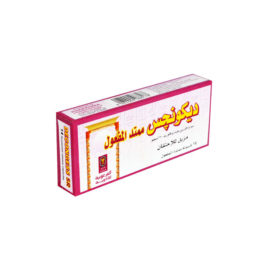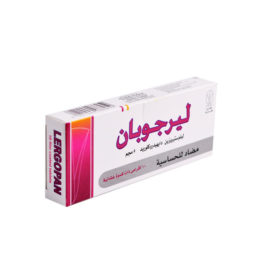Description
3. Pharmaceutical form
Syrup
4. Clinical particulars
4.1 Therapeutic indications
Bronchoterol syrup is indicated in adults, adolescents and children aged 2 to 12 years.
Salbutamol is a selective beta-2 adrenoceptor agonist providing short-acting (4-6 hour) bronchodilation in reversible airways obstruction. Bronchoterol syrup can be used in the management of asthma, bronchospasm and/or reversible airways obstruction.
Relief of bronchospasm in bronchial asthma of all types.
Bronchoterol syrup is suitable oral therapy for children and adults who are unable to use an inhaler device.
4.2 Posology and method of administration
Route of administration: oral
Adults
The minimum starting dose is 2mg three times a day given as 5ml syrup. The usual effective dose is 4mg (10ml syrup) three or four times a day, which may be increased to a maximum of 8mg (20ml syrup) three or four times a day if adequate bronchodilation is not obtained.
Elderly
In elderly patients or in those known to be unusually sensitive to beta-adrenergic stimulant drugs, it is advisable to initiate treatment with the minimum starting dose.
Pediatric Population
2 – 6 years: the minimum starting dose is 1mg as 2.5ml of syrup three times daily. This may be increased to 2mg as 5ml of syrup three or four times daily.
6 – 12 years: the minimum starting dose is 2mg as 5ml syrup three times daily. This may be increased to four times daily.
Over 12 years: the minimum starting dose is 2mg three times daily given as 5ml syrup. This may be increased to 4mg as 10ml syrup three or four times daily.
Bronchoterol is well tolerated by children so that, if necessary, these doses may be cautiously increased to the maximum dose.
For lower doses the syrup may be diluted with freshly prepared purified water BP.
4.3 Contraindications
Hypersensitivity to the active substance or any of the excipients.
Non-i.v. formulations of salbutamol must not be used to arrest uncomplicated premature labour or threatened abortion.
4.4 Special warnings and precautions for use
Bronchodilators should not be the only or main treatment in patients with severe or unstable asthma. Severe asthma requires regular medical assessment including lung function testing as patients are at risk of severe attacks and even death. Physicians should consider using oral corticosteroid therapy and/or the maximum recommended dose of inhaled corticosteroid in those patients.
Patients should seek medical advice if treatment with Bronchoterol syrup becomes less effective.
The dosage or frequency of administration should only be increased on medical advice.
Patients taking Bronchoterol syrup may also be receiving short-acting inhaled bronchodilators to relieve symptoms.
Increasing use of bronchodilators in particular short-acting inhaled beta2-agonists to relieve symptoms indicates deterioration of asthma control. The patient should be instructed to seek medical advice if short-acting relief bronchodilator treatment becomes less effective or they need more inhalations than usual.
In this situation patients should be reassessed and consideration given to the need for increased anti-inflammatory therapy (eg. Higher doses of inhaled corticosteroids or a course of oral corticosteroid). Severe exacerbations of asthma must be treated in the normal way.
Patients should be warned that if either the usual relief with Bronchoterol oral preparations is diminished or the usual duration of action reduced, they should not increase the dose or its frequency of administration, but should seek medical advice.
Cardiovascular effects may be seen with sympathomimetic drugs, including salbutamol. There is some evidence from post-marketing data and published literature of rare occurrences of myocardial ischaemia associated with salbutamol. Patients with underlying severe heart disease (e.g. ischaemic heart disease, arrhythmia or severe heart failure) who are receiving salbutamol should be warned to seek medical advice if they experience chest pain or other symptoms of worsening heart disease. Attention should be paid to assessment of symptoms such as dyspnoea and chest pain, as they may be of either respiratory or cardiac origin.
Salbutamol should be administered cautiously to patients suffering from thyrotoxicosis.
Potentially serious hypokalaemia may result from beta-2 agonist therapy mainly from parenteral and nebulised administration. Particular caution is advised in acute severe asthma as this effect may be potentiated by hypoxia and by concomitant treatment with xanthine derivatives, steroids. It is recommended that serum potassium levels are monitored is such situations.
In common with other β-adrenoceptor agonists, salbutamol can induce reversible metabolic changes such as increased blood glucose levels. Diabetic patients may be unable to compensate for the increase in blood glucose and the development of ketoacidosis has been reported. Concurrent administration of corticosteroids can exaggerate this effect.
Bronchoterol Syrup contains 5.6 mg sodium in each 5 ml of syrup. This should be taken into consideration by patients on a controlled sodium diet. Bronchoterol syrup is sugar free.
4.5 Interaction with other medicinal products and other forms of interaction
Bronchoterol syrup and non-selective beta-blocking drugs, such as propranolol, should not usually be prescribed together.
4.6 Pregnancy and lactation
Pregnancy
Administration of drugs during pregnancy should only be considered if the expected benefit to the mother is greater than any possible risk to the foetus.
As with the majority of drugs, there is little published evidence of its safety in the early stages of human pregnancy, but in animal studies there was evidence of some harmful effects on the foetus at very high dose levels.
Breast-feeding
As salbutamol is probably secreted in breast milk its use in nursing mothers requires careful consideration.
It is not known whether salbutamol has a harmful effect on the neonate, and so its use should be restricted to situations where it is felt that the expected benefit to the mother is likely to outweigh any potential risk to the neonate.
Fertility
There is no information on the effects of salbutamol on human fertility. There were no adverse effects on fertility in animals (see section 5.3).
4.7 Effects on ability to drive and use machines
None known.
4.8 Undesirable effects
Adverse events are listed below by system organ class and frequency. Frequencies are defined as: very common (≥1/10), common (≥1/100 and <1/10), uncommon (≥1/1000 and <1/100), rare (≥1/10,000 and <1/1000) and very rare (<1/10,000) including isolated reports. Very common and common events were generally determined from clinical trial data. Rare, very rare and unknown events were generally determined from spontaneous data.
Immune system disorders
Very rare:
Hypersensitivity reactions including angioedema, urticaria, bronchospasm, hypotension and collapse.
Metabolism and nutrition disorders
Rare:
Hypokalaemia.
Potentially serious hypokalaemia may result from beta agonist therapy.
Nervous system disorders
Very common:
Tremor.
Common:
Headache.
Very rare:
Hyperactivity.
Cardiac disorders
Common:
Tachycardia, palpitations.
Rare:
Cardiac arrhythmias including atrial fibrillation, supraventricular tachycardia and extrasystoles
Unknown:
Myocardial ischaemia* (see section 4.4)
Vascular disorders
Rare:
Peripheral vasodilatation.
Musculoskeletal and connective tissue disorders
Common:
Muscle cramps.
Very rare:
Feeling of muscle tension.
* reported spontaneously in post-marketing data therefore frequency regarded as unknown
4.9 Overdose
The most common signs and symptoms of overdose with salbutamol are transient beta agonist pharmacologically mediated events, including tachycardia, tremor, hyperactivity and metabolic effects including hypokalaemia (see sections 4.4 and 4.8).
Hypokalaemia may occur following overdose with salbutamol. Serum potassium levels should be monitored.
Lactic acidosis has been reported in association with high therapeutic doses as well as overdoses of short-acting beta-agonist therapy, therefore monitoring for elevated serum lactate and consequent metabolic acidosis (particularly if there is persistence or worsening of tachypnea despite resolution of other signs of bronchospasm such as wheezing) may be indicated in the setting of overdose.
Nausea, vomiting and hyperglycaemia have been reported, predominantly in children and when salbutamol overdose has been taken via the oral route.
Further management should be as clinically indicated or as recommended by the national poisons centre, where available.
5. Pharmacological properties
5.1 Pharmacodynamic properties
Pharmacotherapeutic group: Selective beta-2-adrenoreceptor agonists
Salbutamol is a selective beta-2 adrenoceptor agonist. At therapeutic doses it acts on the beta-2 adrenoceptors of bronchial muscle providing short acting (4-6 hours) bronchodilation in reversible airways obstruction.
5.2 Pharmacokinetic properties
Salbutamol administered intravenously has a half life of 4 to 6 hours and is cleared partly renally and partly by metabolism to the inactive 4' -O-sulfate (phenolic sulfate) which is also excreted primarily in the urine. The faeces are a minor route of excretion. The majority of a dose of salbutamol given intravenously, orally or by inhalation is excreted within 72 hours. Salbutamol is bound to plasma proteins to the extent of 10%.
After oral administration, salbutamol is absorbed from the gastrointestinal tract and undergoes considerable first-pass metabolism to the phenolic sulfate. Both unchanged drug and conjugate are excreted primarily in the urine. The bioavailability of orally administered salbutamol is about 50%.
6. Pharmaceutical particulars
6.1 Incompatibilities
None known
6.2Shelf life
24 months.
6.3Special precautions for storage
Store at a temperature not exceeding 30°C.
Keep out of reach of children.
Pack
Carton box containing brown round glass bottle (Type III) of 120 ml with aluminium cap and inner leaflet.







Reviews
There are no reviews yet.